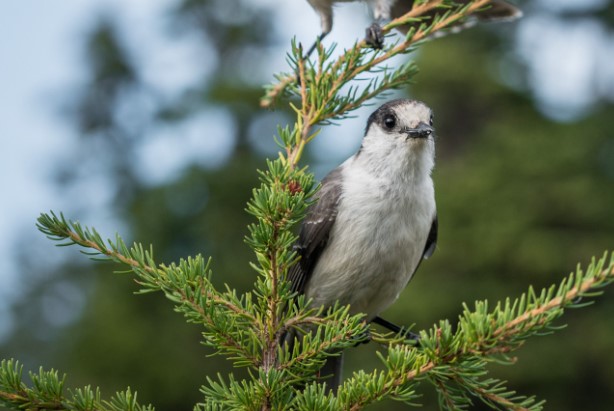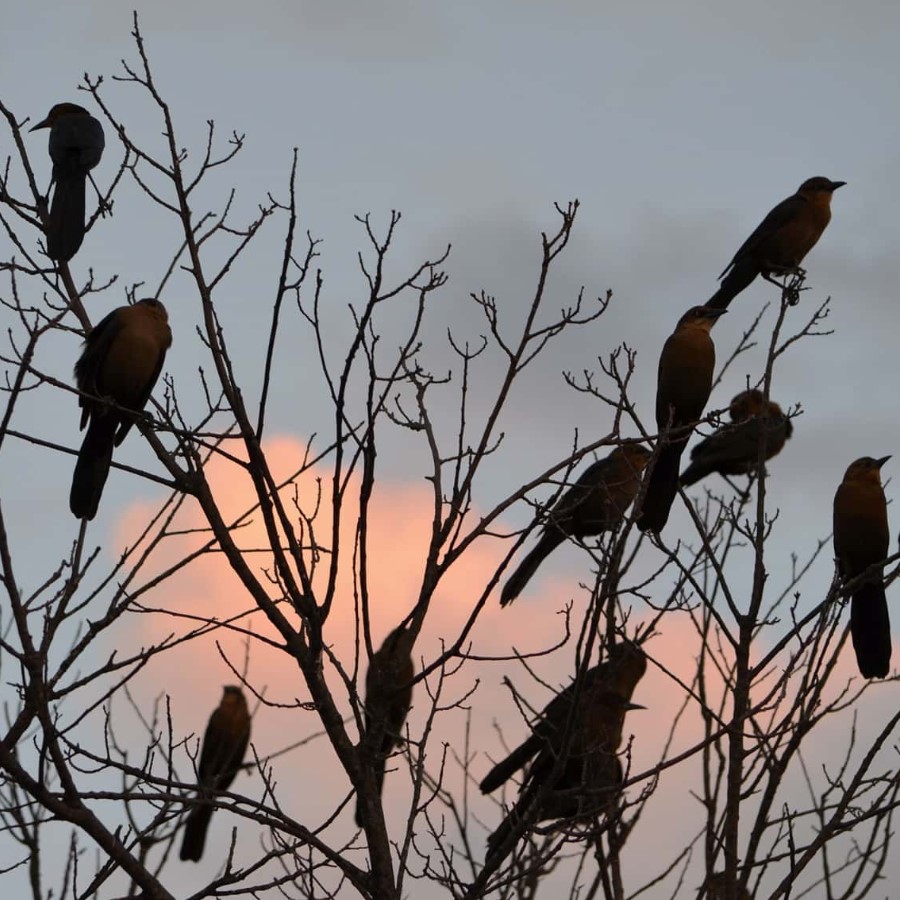Native trees are vital to supporting local ecosystems, offering food, shelter, and nesting sites for countless wildlife species. In North America, choosing the right trees for a landscape can create a haven for birds, pollinators, and small mammals, enhancing biodiversity and promoting ecological resilience. This article explores some of the best North American trees for attracting wildlife, helping landowners, gardeners, and conservationists make informed choices that benefit both flora and fauna.

Top Trees for Birds
Selecting trees that attract birds can transform a landscape into a vibrant sanctuary, providing essential food and nesting resources. Here are some standout North American species that are particularly beneficial for various bird species.
- Oaks (Quercus spp.)
- Oaks are one of the most valuable trees for birds due to their high acorn production, which provides food for woodpeckers, jays, and even larger birds like wild turkeys. In addition to acorns, oaks support an impressive variety of insects, which are critical food sources for insectivorous birds, especially during nesting season.
- Popular Species: White Oak (Quercus alba), Red Oak (Quercus rubra)
- Serviceberry (Amelanchier spp.)
- Serviceberries produce clusters of small, sweet berries that attract a range of songbirds, including robins, cedar waxwings, and thrushes. The dense branches also make excellent nesting sites, especially for smaller birds that prefer sheltered locations.
- Popular Species: Downy Serviceberry (Amelanchier arborea), Allegheny Serviceberry (Amelanchier laevis)
- Eastern Red Cedar (Juniperus virginiana)
- This evergreen tree is prized by birds for both food and shelter. Its bluish berries are a favorite for cedar waxwings, bluebirds, and mockingbirds, especially in winter. The dense foliage offers year-round cover, providing birds with protection from predators and harsh weather.
- Popular Species: Eastern Red Cedar is the primary species, but other junipers may provide similar benefits.
- Hackberry (Celtis occidentalis)
- Hackberries produce small, pea-sized fruit that ripens in late summer, attracting a variety of birds, including mockingbirds, cardinals, and robins. This tree also hosts several butterfly species, providing an additional food source for insectivorous birds.
- Popular Species: Common Hackberry (Celtis occidentalis)
- Flowering Crabapple (Malus spp.)
- Known for their springtime blooms, flowering crabapples are a magnet for both insects and birds. As the fruit ripens in late summer and fall, it attracts birds like finches, thrushes, and waxwings. Additionally, the tree’s dense canopy serves as a good nesting site.
- Popular Species: Prairie Crabapple (Malus ioensis), Southern Crabapple (Malus angustifolia)

Pollinator-Friendly Trees
Trees that attract pollinators are crucial for maintaining biodiversity, providing nectar and pollen to bees, butterflies, and other beneficial insects. Below are some of the best North American trees for supporting pollinators.
- Flowering Dogwood (Cornus florida)
- Flowering Dogwood is a beautiful understory tree known for its spring blooms that attract a wide range of pollinators, including bees and butterflies. Its flowers are not only a source of nectar but also signal the arrival of spring in many areas, offering an early-season food source when other blooms are scarce.
- Popular Species: Eastern Flowering Dogwood (Cornus florida)
- Red Maple (Acer rubrum)
- Red Maple is one of the first trees to bloom in early spring, providing an essential food source for pollinators emerging from winter dormancy. Its small red flowers attract bees, which help with early-season pollination. Red Maple is also known for its adaptability, thriving in a variety of soil conditions.
- Popular Species: Northern Red Maple (Acer rubrum)
- Black Cherry (Prunus serotina)
- Black Cherry’s fragrant white flowers bloom in spring, attracting numerous bees and butterflies. This tree is also a host plant for the larvae of several butterfly species, including the Eastern Tiger Swallowtail, providing food for caterpillars that later become adult pollinators.
- Popular Species: Black Cherry (Prunus serotina)
- Basswood (Tilia americana)
- Also known as American Linden, Basswood produces clusters of fragrant yellow-white flowers in early summer that are highly attractive to bees. Basswood honey is prized for its mild, sweet flavor, and the tree’s long bloom period helps sustain pollinators during midsummer.
- Popular Species: American Basswood (Tilia americana)
- Sourwood (Oxydendrum arboreum)
- Sourwood is a lesser-known but valuable tree for pollinators, especially bees. Its small, bell-shaped flowers bloom in mid-summer, providing nectar when many other plants have finished flowering. Sourwood honey is a sought-after variety due to its distinct flavor.
- Popular Species: Sourwood (Oxydendrum arboreum)
Planting these pollinator-friendly trees not only supports local insect populations but also enhances the health of surrounding plants and crops. By attracting a variety of pollinators, these trees contribute to the overall resilience of the ecosystem.

Trees that attract Small Mammals
In addition to birds and pollinators, many trees provide critical resources for small mammals like squirrels, chipmunks, and rabbits. These trees offer food, shelter, and safe nesting areas, supporting the broader ecosystem.
- American Beech (Fagus grandifolia)
- American Beech produces small, triangular nuts that are a favorite for squirrels, chipmunks, and deer. Its dense canopy provides shelter, while its smooth bark makes it easy for animals to climb. Beechnuts ripen in fall, offering a high-energy food source for small mammals as they prepare for winter.
- Popular Species: American Beech (Fagus grandifolia)
- Sugar Maple (Acer saccharum)
- Sugar Maples produce winged seeds, known as samaras, which feed a variety of small mammals, including squirrels and mice. The tree’s sap, rich in sugars, is a natural energy source, especially during late winter. Sugar Maple’s dense branches also offer shelter and protection.
- Popular Species: Sugar Maple (Acer saccharum)
- Shagbark Hickory (Carya ovata)
- This hickory species is known for its large, nutritious nuts that are a staple for squirrels, chipmunks, and other small animals. Its peeling, “shaggy” bark also creates small crevices, providing shelter for bats and nesting spaces for some small mammals and birds.
- Popular Species: Shagbark Hickory (Carya ovata)
- Eastern Hemlock (Tsuga canadensis)
- Eastern Hemlock provides excellent year-round cover due to its evergreen foliage, which protects small mammals from predators and harsh weather. Its tiny seeds, hidden in small cones, are a food source for mammals like voles, mice, and rabbits.
- Popular Species: Eastern Hemlock (Tsuga canadensis)
- Hazelnut (Corylus americana)
- American Hazelnut is a shrub-like tree that produces edible nuts enjoyed by squirrels, rabbits, and even woodpeckers. Its dense foliage offers excellent cover, while its spreading growth habit creates a low, sheltering canopy for ground-dwelling animals.
- Popular Species: American Hazelnut (Corylus americana)
These trees support small mammals through food and shelter, creating a balanced ecosystem that encourages natural wildlife behavior and resilience. Adding these trees to a landscape is an effective way to sustain local wildlife populations year-round.

Special Considerations for Habitat and Shelter
When creating a landscape to attract wildlife, it’s essential to consider not just individual tree species but how these trees interact to form a layered, diverse habitat. By combining trees that vary in height, canopy density, and seasonal characteristics, you can create a sustainable environment that meets the needs of a wide range of wildlife.
- Multi-Layered Canopies for Diverse Habitats
- Planting trees with varying heights, from tall oaks and maples to shorter understory trees like dogwoods and serviceberries, creates multiple canopy layers. This approach provides diverse food and nesting options for birds, small mammals, and pollinators. Tall trees offer perching spots and nest sites for larger birds, while shorter trees create sheltered, lower-level habitats.
- Seasonal Food Availability
- Incorporating trees that produce food throughout different seasons helps ensure a steady supply of resources for wildlife. For example, red maple offers early spring nectar, while oaks and hickories provide nuts in the fall. Evergreen species, such as Eastern Hemlock, add winter shelter, and late-flowering trees like sourwood offer food in mid-summer when other sources may be limited.
- Shelter from Predators and Weather
- Trees with dense foliage, like Eastern Red Cedar and American Holly, provide crucial shelter from predators and harsh weather, especially in winter. Deciduous trees, when paired with evergreens, create a balanced landscape that provides cover all year round. This is particularly important for birds and small mammals, which rely on thick foliage and branch cover to stay safe.
- Choosing Native Trees for Maximum Benefit
- Native trees offer the most benefit to local wildlife because they have evolved alongside native animal species. They often support more insects and provide food that is familiar to local wildlife. For example, oaks and cherries are known to support hundreds of native caterpillar species, which are a primary food source for birds, particularly during nesting season.

Planting and Maintenance Tips for Wildlife Attraction
Attracting wildlife to a landscape requires not only choosing the right trees but also following good planting and maintenance practices. These tips will help you establish a healthy habitat that encourages wildlife to visit and thrive.
- Planting Tips for a Healthy Start
- When planting trees for wildlife, select locations with proper sunlight, drainage, and spacing to allow each tree to grow fully. Grouping trees of different heights close together can create natural layers that enhance habitat value. Adding a mix of flowering, nut-bearing, and evergreen trees will maximize food sources and shelter options for wildlife throughout the year.
- Avoiding Chemicals and Pesticides
- To attract wildlife, it’s essential to keep the area as chemical-free as possible. Pesticides and herbicides can harm pollinators and disrupt the food chain by reducing insect populations, which are vital for many bird and mammal species. Instead, use natural pest control methods like encouraging predator insects or planting companion plants that deter pests.
- Mulching and Soil Care
- A layer of organic mulch around the base of trees helps retain moisture, regulate soil temperature, and suppress weeds, creating a healthier environment for roots. Mulch also creates a habitat for decomposers like beetles and earthworms, which, in turn, attract birds and small mammals. Avoid piling mulch directly against tree trunks, as this can encourage rot.
- Pruning with Wildlife in Mind
- Pruning dead or diseased branches is essential for tree health, but consider leaving a few dead branches, if safe, to provide habitat for woodpeckers and cavity-nesting birds. Avoid heavy pruning during nesting seasons, usually spring and summer, to prevent disturbing or displacing wildlife that may be using the trees.
- Promoting Natural Growth
- Allowing trees to grow in a natural, less-manicured form encourages more wildlife use, as the varied structure provides more places for animals to hide, perch, and forage. Avoid shaping or thinning out trees in ways that could reduce their suitability for wildlife.
By following these planting and maintenance guidelines, you can create a robust and thriving habitat that supports a wide range of wildlife species. Thoughtful care ensures that trees not only grow strong and healthy but also provide lasting benefits to the ecosystem.
Conclusion: Enhancing Landscapes for Biodiversity
Incorporating native trees into your landscape is one of the most impactful ways to support local wildlife and foster biodiversity. Each tree type offers unique benefits, from providing food sources and nesting sites to creating shelter and protection from predators. By selecting a diverse mix of trees that cater to birds, pollinators, and small mammals, and by maintaining them thoughtfully, you’re not only beautifying the landscape but also making a lasting contribution to ecological health.
Small changes, like choosing native over non-native species, avoiding pesticides, and creating multi-layered canopies, can transform ordinary outdoor spaces into thriving wildlife habitats. As these trees grow and mature, they continue to enrich the ecosystem, offering a sustainable refuge for generations of wildlife to come. With these efforts, each landscape has the potential to become a vibrant part of North America’s rich natural heritage.




